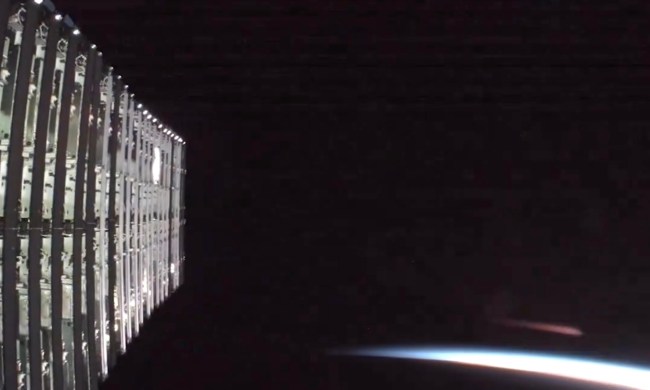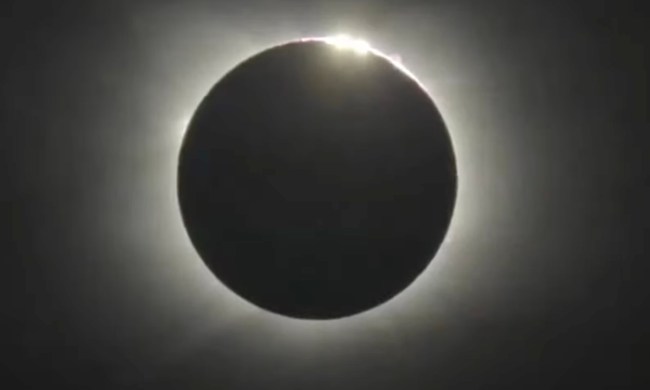The European Space Agency’s Solar Orbiter has taken an incredible high-resolution image of the sun, showing its full face and its outer atmosphere or corona.
To give you an idea of just how big the sun is, the image includes a picture of the Earth for scale — it’s the teeny tiny dot in the top right corner of the image. The sun has a diameter of over 860,000 miles, which, as NASA points out, means that if the sun were the size of a typical front door, then the Earth would be the size of a nickel.

To capture this image, Solar Orbiter used its Extreme Ultraviolet Imager (EUI) instrument, which looks in the far part of the ultraviolet wavelength, beyond the purple end of the visible light spectrum. Looking in this range allows the instrument to see the blazing heat in the sun’s corona.
“The image is a mosaic of 25 individual images taken on 7 March by the high-resolution telescope of the Extreme Ultraviolet Imager (EUI) instrument,” ESA writes. “Taken at a wavelength of 17 nanometers, in the extreme ultraviolet region of the electromagnetic spectrum, this image reveals the Sun’s upper atmosphere, the corona, which has a temperature of around a million degrees Celsius. In total, the final image contains more than 83 million pixels in a 9148 x 9112-pixel grid, making it the highest resolution image of the Sun’s full disc and outer atmosphere, the corona, ever taken.”
The image also shows two features called prominence, which are the dark tendrils reaching out from the sun at the two o’clock and eight o’clock positions. These prominences, which are looping structures of plasma that can reach hundreds of thousands of miles out into space, tend to erupt and throw out plasma at high speeds in events called coronal mass ejections. These can have effects that spread out through the solar system and even affect Earth in the form of space weather.
Today, Saturday 16 March, Solar Orbiter reaches its first close perihelion or closest point to the sun and will take its highest resolution images of the sun yet.



